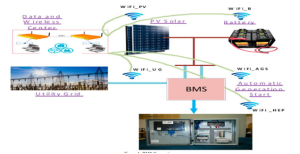Battery management system (BMS) is technology dedicated to the oversight of a battery pack, which is an assembly of battery cells, electrically organized in a row x column matrix configuration to enable the delivery of a targeted range of voltage and current for a duration of time against expected load scenarios. Battery management systems do not have a fixed or unique set of criteria that must be adopted.
The technology design scope and implemented features generally correlate with:
- The costs, complexity, and size of the battery pack
- Application of the battery and any safety, lifespan, and warranty concerns
- Certification requirements from various government regulations where costs and penalties are paramount if inadequate functional safety measures are in place.

How Battery Monitoring System work?
Monitoring sensors are attached to each of the batteries. The sensor measures individual battery cell voltage charging and discharging current. These data are transferred to a monitoring system controller.
- Monitoring system controller is where the data are stored and then trended with the battery monitoring software.
- The software translates data into readable performance data.
- The controller alerts the user with alarm warnings via email and/or cell phone texts.
- The software allows user to access battery measurement data and historical data quickly and easily for trending analysis which can be viewed in PC.
- Identifying problems, performing predictive analysis, and generating simple and clear reports become easy with the help of the battery monitoring software.
BMS is defined differently depending on the application. BMS, in general, refers to a management strategy that keeps an eye on, regulates, and improves a person’s performance or the performance of several battery modules in an energy storage system.
BMS is used in automotive applications to manage energy at various system interfaces and to protect the system from dangers.BMS is composed of several useful structural components. The functional blocks of the BMS are linked to the batteries and every other element of the structured system, including controllers, a grid, and other dispersed resources.
Applications
- Battery monitoring, e-mobility
- State-of-charge, state-of-health
- Prototyping, development, test platform
- Functional safety
